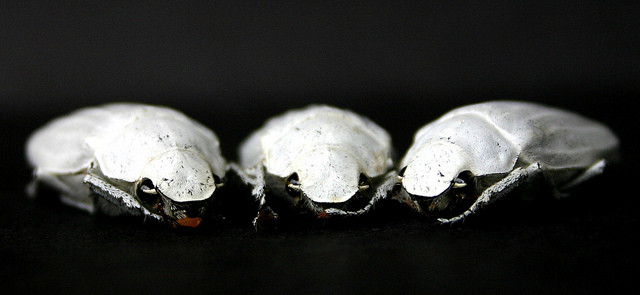Scientists create blackest material ever seen

Ozzy Osbourne might call himself the Prince of Darkness but a team of scientists can lay claim to being the kings after successfully creating the blackest material humans have ever seen, which absorbs almost all light and could help improve solar panel technology.
The researchers at King Abdulla University of Science and Technology in Saudi Arabia were inspired by an all-white beetle and employed nanoparticles to reach new levels of darkness.
The scales on the cyphochilus beetle form a photonic crystal structure that allow its shell to reflect light with incredible efficiency, so the team took this idea and polarised it to create a material that can suck up approximately 98% to 99% of light directed at it from all angles – 26% more than the previous record holder, which used carbon nanotubes.

The dark knights at the King Abdullah University published their findings in Nature Nanotechnology and revealed to mimic the beetle's shell, they placed one nanoparticle rod sitting atop of a nanoparticle sphere that is just 30 nm in diameter. The result is an uneven surface composed of a pattern of random pits with infinitely long metallic waveguides. The material is so dark, human eyes cannot compute what they are looking at and previous people who have seen such materials describe feeling like they are staring into a bottomless black hole.
The purpose of creating the blackest material possible is to help with solar panel technology efficiency as the blacker the material used, the more light – or energy – can be absorbed. The researchers also claim it could also lead to breakthroughs in fibre optic technology and, as it can be applied to liquid, could help desalination projects.
© Copyright IBTimes 2025. All rights reserved.






















